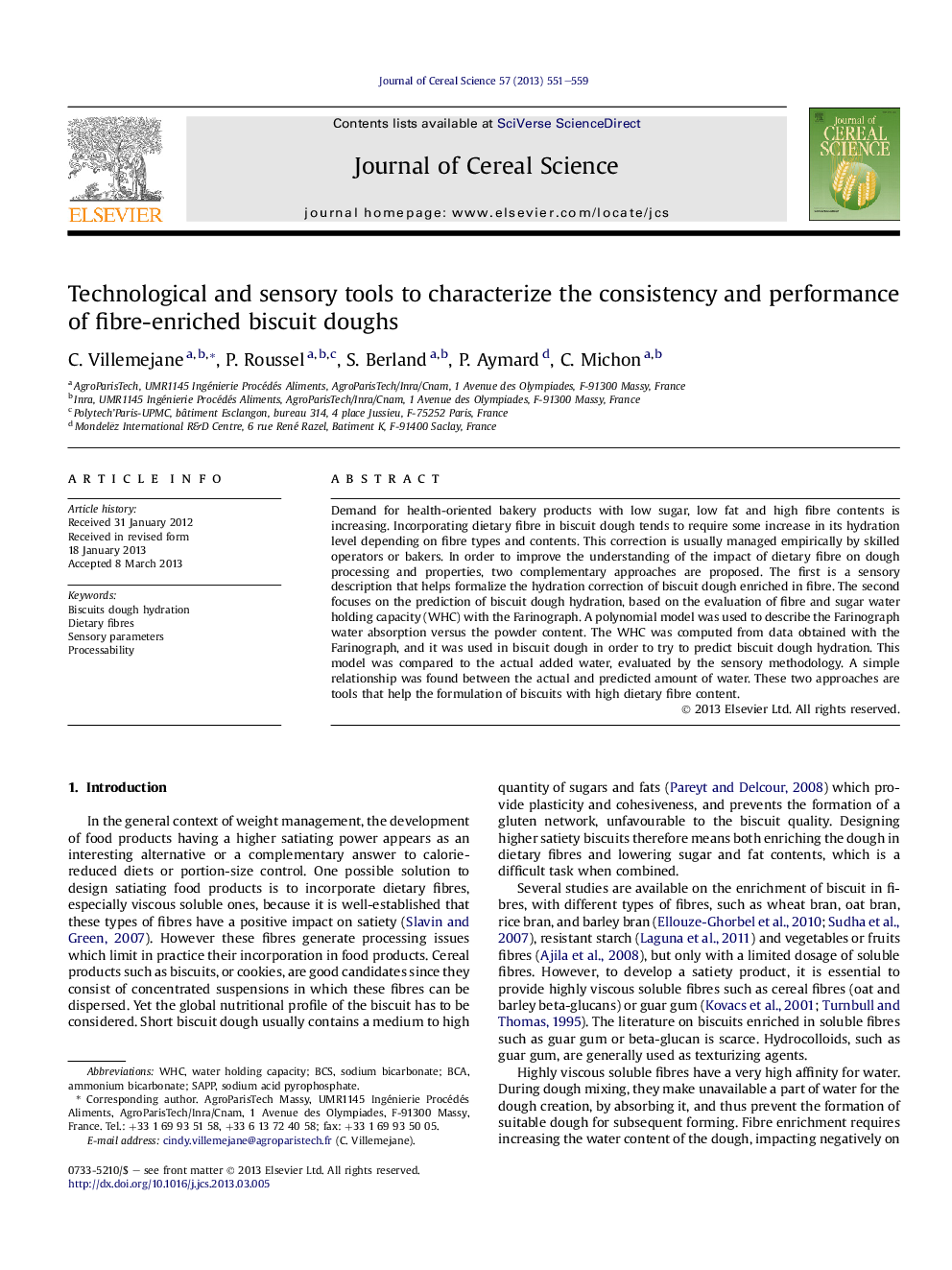| Article ID | Journal | Published Year | Pages | File Type |
|---|---|---|---|---|
| 6377967 | Journal of Cereal Science | 2013 | 9 Pages |
Abstract
Demand for health-oriented bakery products with low sugar, low fat and high fibre contents is increasing. Incorporating dietary fibre in biscuit dough tends to require some increase in its hydration level depending on fibre types and contents. This correction is usually managed empirically by skilled operators or bakers. In order to improve the understanding of the impact of dietary fibre on dough processing and properties, two complementary approaches are proposed. The first is a sensory description that helps formalize the hydration correction of biscuit dough enriched in fibre. The second focuses on the prediction of biscuit dough hydration, based on the evaluation of fibre and sugar water holding capacity (WHC) with the Farinograph. A polynomial model was used to describe the Farinograph water absorption versus the powder content. The WHC was computed from data obtained with the Farinograph, and it was used in biscuit dough in order to try to predict biscuit dough hydration. This model was compared to the actual added water, evaluated by the sensory methodology. A simple relationship was found between the actual and predicted amount of water. These two approaches are tools that help the formulation of biscuits with high dietary fibre content.
Keywords
Related Topics
Life Sciences
Agricultural and Biological Sciences
Agronomy and Crop Science
Authors
C. Villemejane, P. Roussel, S. Berland, P. Aymard, C. Michon,
